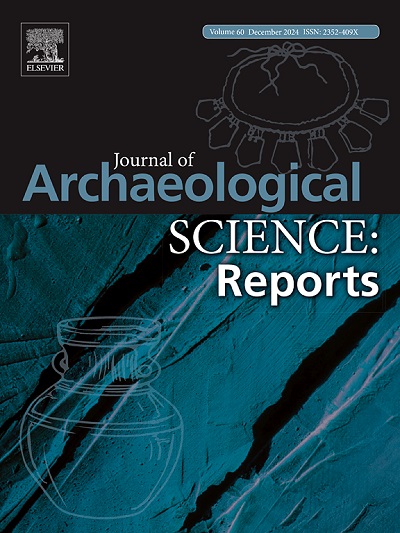Studying the similarity of bronze vessel pattern types from the Shang and Zhou dynasties using feature vectors of deep learning
IF 1.5
2区 历史学
0 ARCHAEOLOGY
引用次数: 0
Abstract
Previous research on bronze vessel patterns relied heavily on scholars’ experience, observation and subjective judgment of the characteristics of the patterns of typical samples to categorize and discuss their types and relationship. This approach has resulted in varying viewpoints among scholars. Notably, the origin and evolution of the Qiequ (窃曲) pattern has consistently been a contentious issue among them. The key issue in investigating the relationship between bronze vessel patterns is the absence of a replicable and objective methodology for describing them. To address this, this article introduces the “Model with Genes and No Boundaries (MGNB)”, a framework designed to elucidate the evolution of these patterns. We employed a new method rooted in artificial intelligence, utilizing deep learning feature vectors, to quantitatively describe the relationships between individual patterns and their types. This approach was applied to a dataset of 16,623 bronze vessel pattern samples from the Shang (商) and Zhou (周) dynasties (ca. 1600–256 BCE). We trained the dataset using the ResNet50 residual network, extracting 16,520 correctly predicted sample feature vectors and reducing their dimensionality through UMAP and t-SNE methods. To quantitatively compare samples and their types, we employed Jaccard similarity. Through similarity analysis across different periods, we posit that the evolution of the Qiequ pattern unfolded in three distinct stages: an initial stage of emergence and political selection during the late Shang Dynasty and the early Western Zhou Dynasty, followed by a surge stage characterized by ritual reform during the middle Western Zhou Dynasty, and finally, a stable stage of culture consolidation thereafter. The result has revealed significant differences in similarity among the three identified stages, pointing to distinct replication and hybridization trajectories occurring at various stages, demonstrating the interaction between pattern and human activities. The similarity of feature vectors makes the MGNB model interpretable and provides clues for the study of cultural exchange.

求助全文
约1分钟内获得全文
求助全文
来源期刊

Journal of Archaeological Science-Reports
ARCHAEOLOGY-
CiteScore
3.10
自引率
12.50%
发文量
405
期刊介绍:
Journal of Archaeological Science: Reports is aimed at archaeologists and scientists engaged with the application of scientific techniques and methodologies to all areas of archaeology. The journal focuses on the results of the application of scientific methods to archaeological problems and debates. It will provide a forum for reviews and scientific debate of issues in scientific archaeology and their impact in the wider subject. Journal of Archaeological Science: Reports will publish papers of excellent archaeological science, with regional or wider interest. This will include case studies, reviews and short papers where an established scientific technique sheds light on archaeological questions and debates.
 求助内容:
求助内容: 应助结果提醒方式:
应助结果提醒方式:


